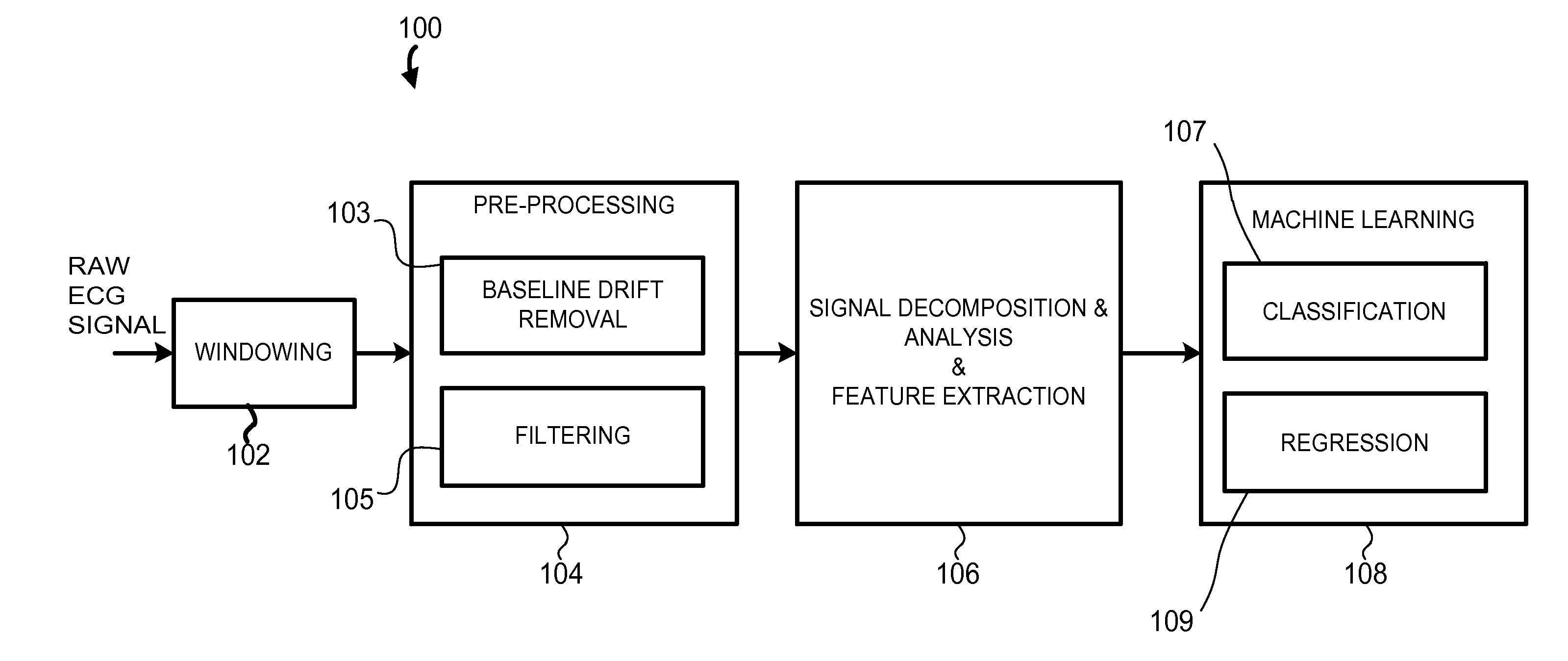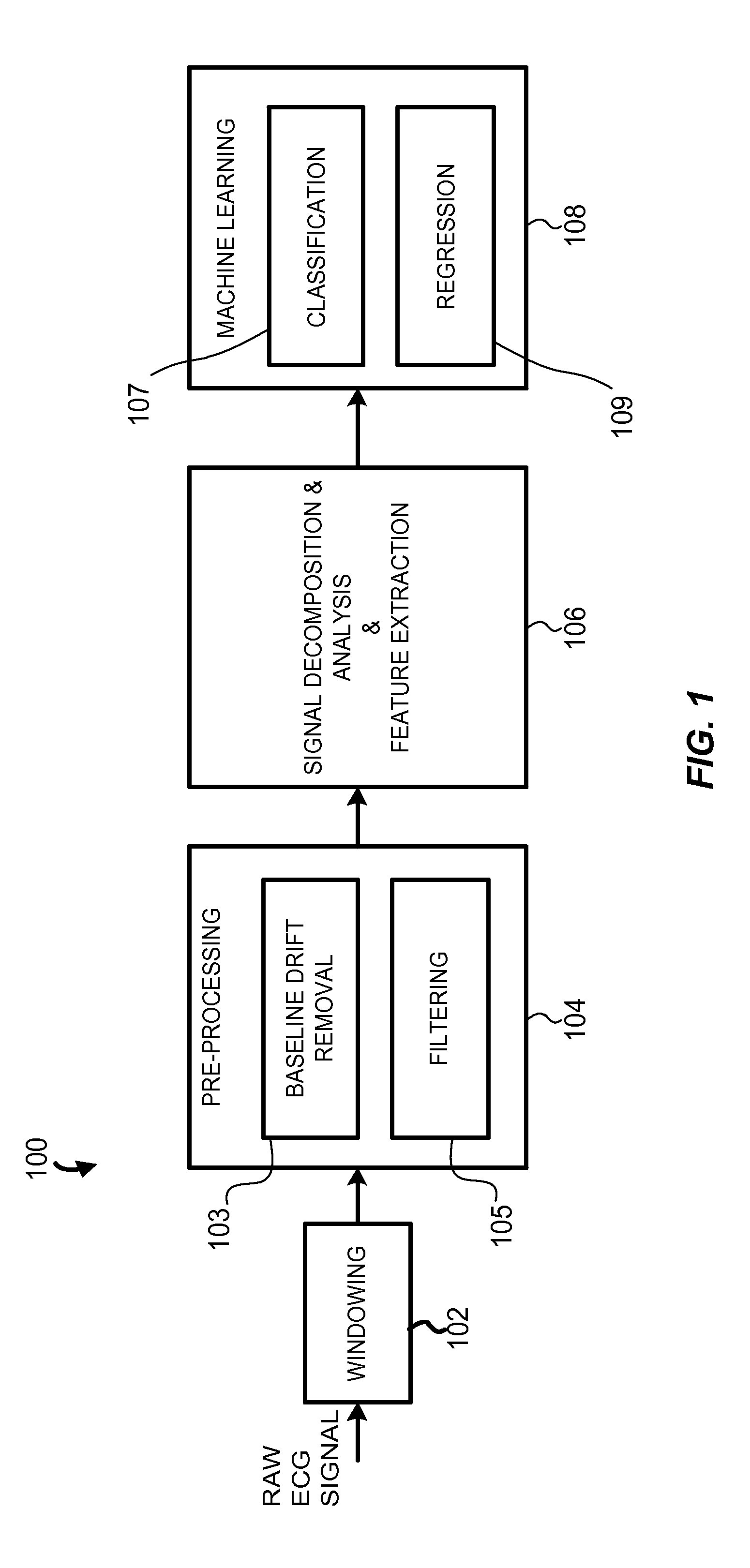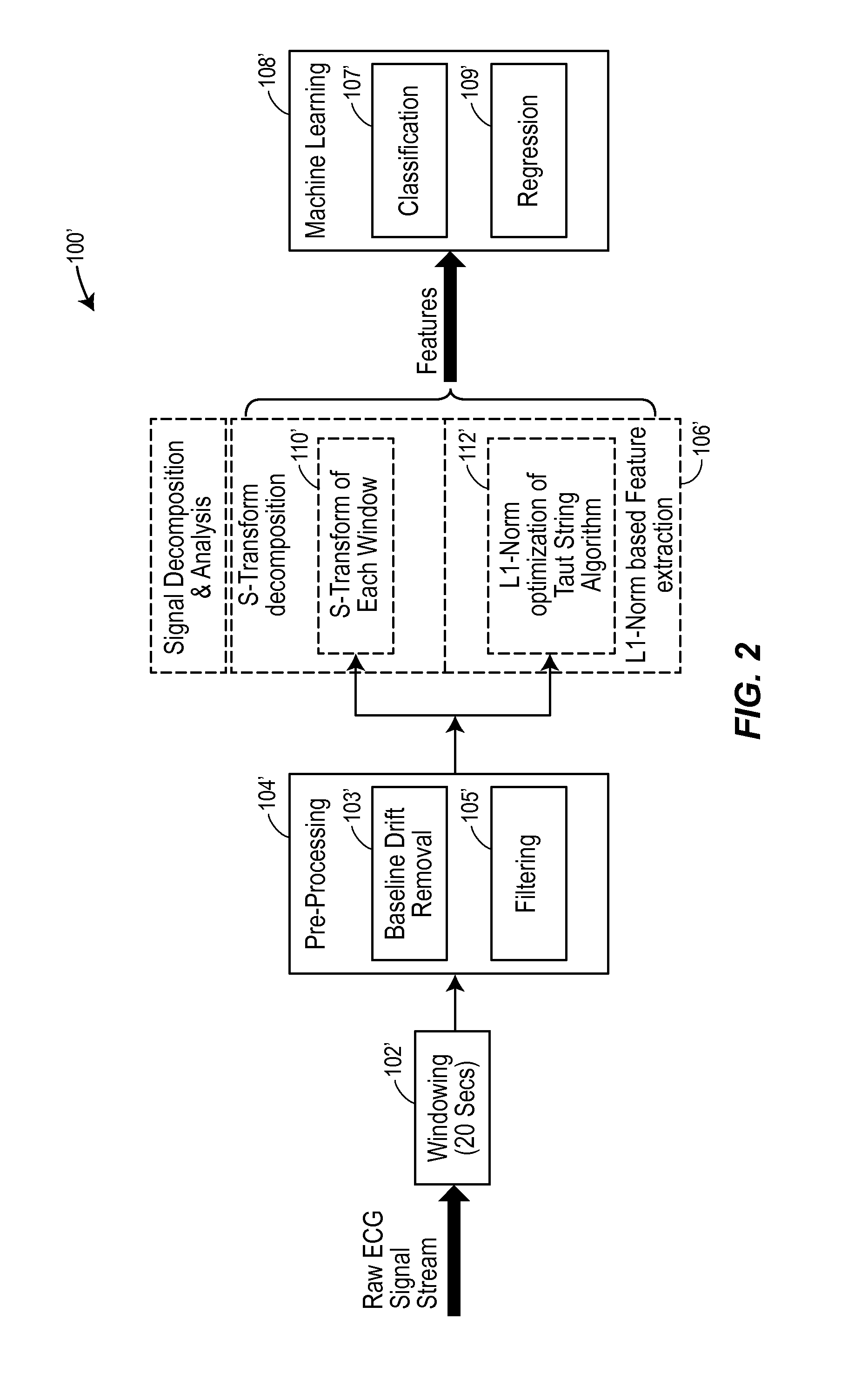Early detection of hemodynamic decompensation using taut-string transformation
a technology of taut-string transformation and which is applied in the field of early detection of hemodynamic decompensation using taut-string transformation and stockwell transformation on ecg signals, can solve the problems of physical limitations of monitoring devices, difficult monitoring in most cases, and real-time physiologic status monitoring of hemorrhaging patients. , to achieve the effect of removing spurious nois
- Summary
- Abstract
- Description
- Claims
- Application Information
AI Technical Summary
Benefits of technology
Problems solved by technology
Method used
Image
Examples
Embodiment Construction
[0019]The present application proposes techniques for developing models of classification for physical conditions of a subject based on monitored physiologic signal data from that subject, data that is transformed and feature extracted using a Taut-string transformation and in some instances using a further Stockwell-transformation, either in parallel or in series. Once the feature extraction is performed, accurate classification models can be developed to categorize a subject's physical condition. By physical condition, we mean a state of hemodynamic stability that is reflective of the cardiovascular and nervous systems.
[0020]In particular examples, a system is used to automatically classify (i.e., categorize) the level hemodynamic compensation or decompensation in response to an illness or injury, by performing an analysis of electrocardiogram (ECG) signals. Other physiologic signals such as the pulse oximetry waveform produced from photoplethysmography (PPG), arterial blood press...
PUM
 Login to View More
Login to View More Abstract
Description
Claims
Application Information
 Login to View More
Login to View More - R&D
- Intellectual Property
- Life Sciences
- Materials
- Tech Scout
- Unparalleled Data Quality
- Higher Quality Content
- 60% Fewer Hallucinations
Browse by: Latest US Patents, China's latest patents, Technical Efficacy Thesaurus, Application Domain, Technology Topic, Popular Technical Reports.
© 2025 PatSnap. All rights reserved.Legal|Privacy policy|Modern Slavery Act Transparency Statement|Sitemap|About US| Contact US: help@patsnap.com



